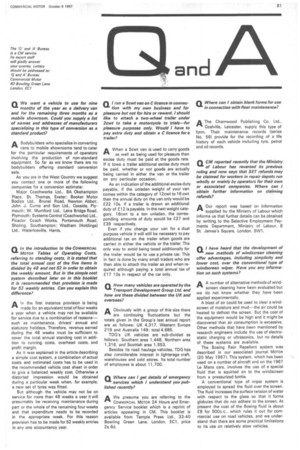n In the introduction to the COMMERCIAL MOTOR Tables of
Page 83

If you've noticed an error in this article please click here to report it so we can fix it.
Operating Costs, referring to standing costs, it is stated that the total annual cost of the five items is divided by 48 and not 52 in order to obtain the weekly amount. But in the simple cost system described later on in this booklet it is recommended that provision is made for 52 weekly entries. Can you explain this difference?
AIn the first instance provision is being made for an equivalent total of four weeks a year when a vehicle may not be available for service due to a combination of reasons— such as maintenance, drivers' annual and statutory holidays. Therefore, revenue earned during the 48 weeks must be sufficient to cover the total annual standing cost in addition to running costs, overhead costs, and profit margin,
As it was explained in the article describing a simple cost system, a combination of actual costs and estimated costs has to be used in the recommended vehicle cost sheet in order to give a balanced weekly cost. Otherwise a distorted impression would be obtained during a particular week when, for example, a new set of tyres was fitted.
But although the vehicle may not be on service for more than 48 weeks a year it will presumably be receiving maintenance during part or the whole of the remaining four weeks and that expenditure needs to be recorded in the appropriate week. For this reason provision has to be made for 52 weekly entries in any one accountancy year.
































































































































